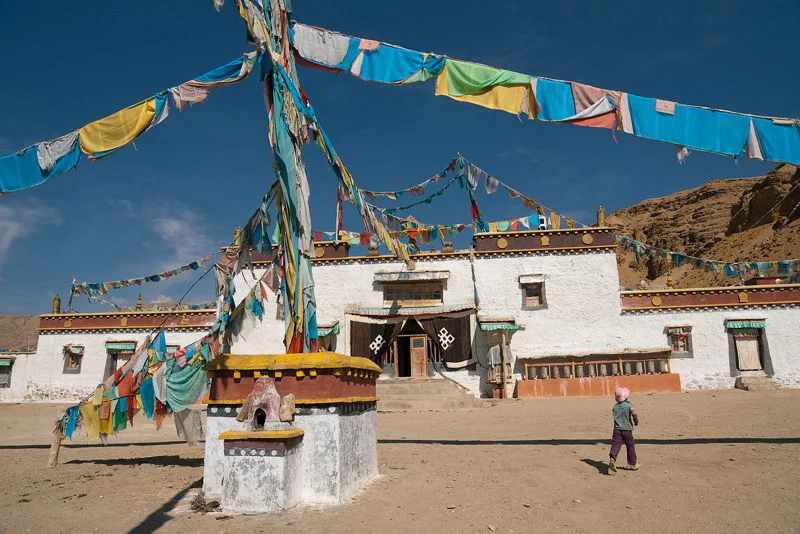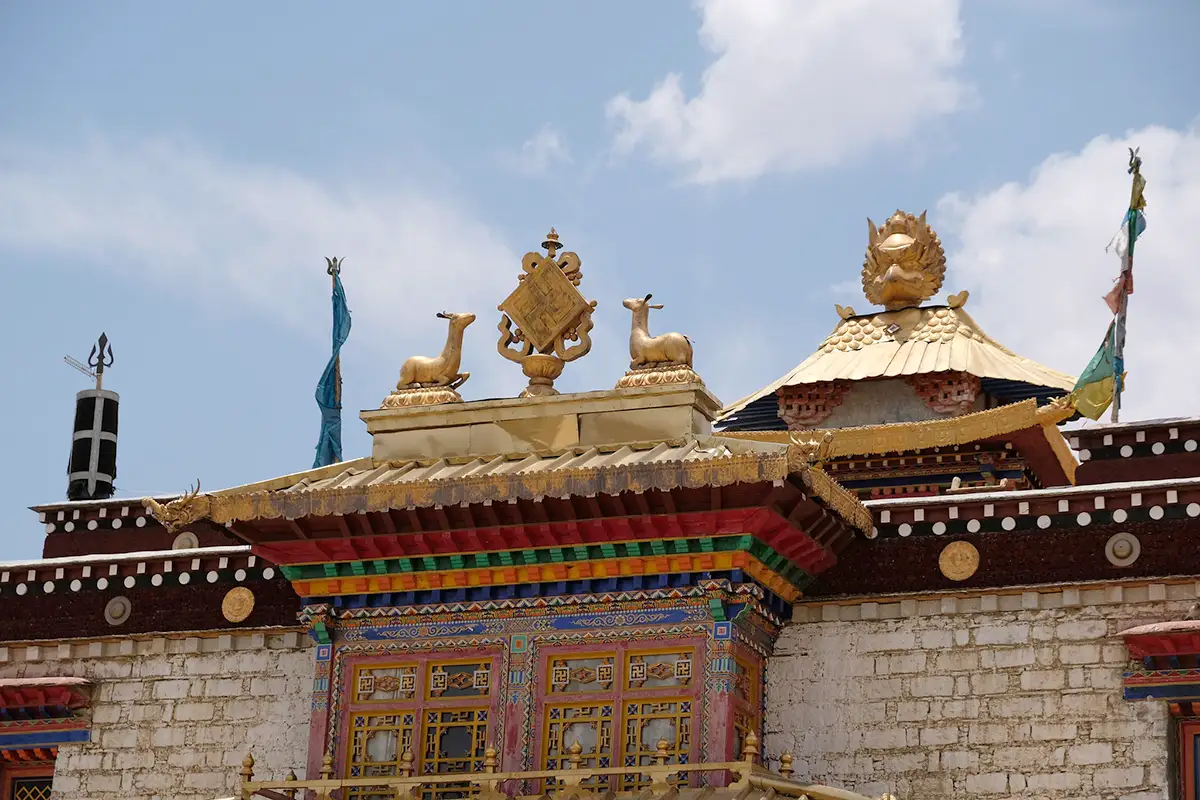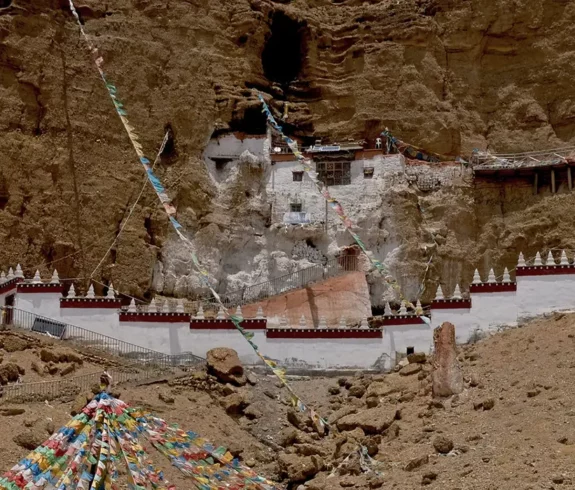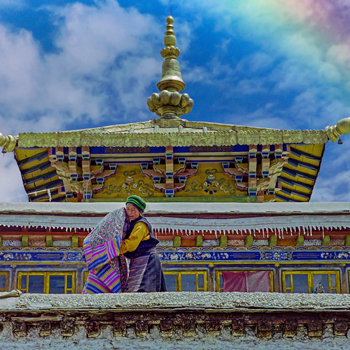Gurugyam Monastery is a magnificent Bon Monastery tucked away in the upper reaches of the Sutlej River valley, a stunning landscape punctuated by a vibrantly hued earthen formation and its multitude of mysterious caves. But this scenic religious center also holds an abundance of archaeological sites of immense importance.
The most notable is Khardong (Mkhar-gdong), a sprawling citadel built atop a mesa only a kilometer away. This majestic ruin is a reminder of the area’s ancient and grandiose history, and it’s easy to see why the locals look upon it with such reverence.
Relationship between Khyungtrul Rinpoche- the great Master, and Gurgyam Monastery
Khyungtrul Rinpoche was born in the Hor region of eastern Tibet, but his most influential work was done in the Gurgyam valley of west Tibet. According to Bonpo’s historical accounts, this area was the seat of the ancient kingdom of Zhang Zhung and the birthplace of the Bon religion.
In an effort to re-establish the Bon religion in the area, Khyungtrul founded the Bon monastery of Gurgyam, close to what he believed to be the location of the mythical Khyunglung ngulkhar (‘the silver Garuda fortress’), the capital of Zhang Zhung. The monastery was nestled next to a cave associated with the eighth-century Bon Master Drenpa Namkha.

Khyungtrul was a contemporary of the famous 19th-century Bon master from the Kham region of Eastern Tibet, Shardza Tashi Gyaltsen (1859-1935). Together, these two lamas were the most influential figures in developing and promoting the Bon religion in the first half of the twentieth century.
Even now, their legacies are still strongly felt in the Bonpo community. Though Shardza Tashi Gyaltsen may have been more prolific in terms of writing, Khyungtrul was no slouch. He penned works on astrology, Tibetan grammar, and Tibetan medicine. As if this wasn’t enough, he was also a talented painter, poet, and composer of religious songs.
Khyungtrul was a pilgrim of his time, traveling to India, Nepal, and Bhutan to explore the famous Bon and Buddhist locations. He meditated in caves and conducted local rituals, especially in the Kinnaur region of northwest India, where he accumulated a broad following.
While in Delhi, he was intrigued by the new print technology and devoted much of his stay in Gurgyam to printing essential Bon and Buddhist texts. He even produced the entire works (gsung ‘bum) of Shardza Tashi Gyaltsen, a copy of which can still be discovered in the monastery today.
At Gurgyam, most of Khyungtrul’s time was dedicated to the arduous task of building the monastery and publishing books. After thirteen years, it was finally concluded in 1948. But despite this, Khyungtrul still made time to write his own works and to teach and practice medicine. It is known that he acquired knowledge of medicine from many Tibetan doctors and was renowned for his skill in the field.
Consequently, numerous people often visited him to seek his advice. Finally, in 1949, he finished his remarkable four-volume medical commentary, the Khyungtrul Menpe.
Gurugyam Monastery- an archaeological museum
In 2006, monks living near the Gurgyam monastery discovered an opulent burial in the vicinity. Upon excavation, a femur piece was found and, when tested, revealed an estimated date range of 220-350 CE. According to the data, the burial likely occurred in the second half of the 3rd century. Most of the artifacts recovered were likely from the same era, while some may be older if the deceased had possessed them for a prolonged period.
Gurgyam’s treasures, proudly showcased in the monastery’s quaint museum, are a sight to behold! From delicate silk to thick-walled beakers, lathe-turned wooden objects, a ‘bronze cup,’ dainty silver pieces with diagonal lines, a copper bellows tube, and a fragment of a human skull, Gurgyam is one of the few places in Tibet to have an archaeological museum of its own.

The individual laid to rest within the Gurgyam tomb was of an esteemed stature, distinguished by the exquisite quality and wide selection of funeral accessories. The artifacts discovered at Gurgyam are a testament to a culture of elevated refinement and complexity, with intricate production and trading capabilities. Undoubtedly, the recovered relics reveal a highly developed material culture.
Final Words
Gurugyam Monastery is a beautiful and serene Buddhist temple that offers a peaceful escape from the hustle and bustle of the city. Its stunning architecture and serene surroundings provide a wonderful setting for meditation, reflection, and spiritual contemplation. Whether you’re a local looking for a tranquil spot to unwind or a traveler seeking a unique cultural experience, Gurugyam Monastery is definitely worth a visit. Its historical significance, beautiful views, and peaceful atmosphere make it a true gem of the region.


